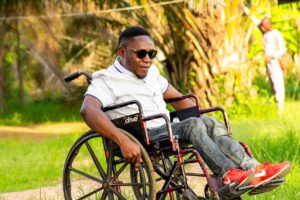Disability is a condition that has been neglected for the better part of the lives of those with conditions or impairment. It is a condition that has seen people find it challenging to do some activities or interact with the world around them. These disabilities include vision, movement, learning, communication, memory failure, and many more.
From a scientific review, one in every four adults in America lives with a disability, contributing to the most significant percentage of the minority group in America.
But in all this, the notion has eventually changed.
The much they used to be referenced as people who cannot work, think and perform duties have been countered through the Disability Rights Movement, which has spearheaded the fight for equal rights and brought an end to discrimination.
Disability Rights Movement Examined
The Disability Rights Movement started in the United States, and a long history of discrimination ignited it. People with disabilities could not enjoy public life, never enjoyed participating in economic growth, and in the worst case, they were denied education. They were viewed as people who needed self-pity and could only survive through charity.
Others who were mentally incapacitated were institutionalized with awful conditions of living that were inhuman and abusive.
It is until the Disability Rights Movement came in handy in the early 1960s and encouraged the civil rights movement. It was formed to fight for several items, including equal opportunities in life, the right to education, removal of any sense of discrimination, neglect, and the safety of physical environments, including the use of buildings, among others.
The movement fought peacefully through protests, with their armies working hard to ensure this would succeed. This led to the Individuals with Disabilities Act and the Americans with Disabilities act. With this new invention, Section 504 was created.

Enactment of the Rehabilitation Act of 1973
The push for the rights of people with a disability did not stop there. In the 1970s, the leaders of disability rights petitioned through a congress marched to Washington and decried to include people with disability in the federation’s financial support. This saw the enactment of the rehabilitation act of 1933 (section 504), and history was made when civil rights saw the disabled protected by law.
Other rights received on this enactment included participation in federally funded activities. Amongst them were; equal access to public services through the Transport Barriers, and Compliance Board and allowances for inclusivity and allocation of vocational training funds.
However, this did not go as planned until 1977, when President Jimmy Carter took office. The movement moved in and demanded the signing and implementation of the Rehabilitation Act of 1973 Section 504. This saw the then Health Education and Welfare Secretary Joseph Califano responding. He appointed a representative among the disability movement to review the Section 504 regulation.
After several attempts, protests, and sit-ins, the regulations were finally signed in April 1977, becoming a sort of the Birth of the disability rights movement. It also changed the perception of the disabled when it laid a firm groundwork for the Americans With Disabilities Act (ADA), enacted in 1990, and the Amendments Act of 2008.
Apart from this, through the rehabilitation Act, the movement congress has passed over 50 pieces of disability rights legislation which has seen disabled people move from self-pity to power.

The Outcome of the Disability Rights Movement
While it was an effort that involved sacrifice, the movement bore many fruits.
Provision for Education for all Handicapped Act – Among the Acts that were passed was the Education for All Handicapped Children in 1975. It saw all disabled children get equal chances to access public Education. Every child was given the right to Education. However, depending on the nature of capability, some who could not proceed to the high level of Education were supported through vocational training and support.
The Invention of the Independent Living Movement
Led by a group of students from UC Berkley, the Independent Living Movement was also born in the 1960s’, having been led by a strong activist, ED Roberts. It aimed to see to it that all people access all rights equally, whether Education, de-medicalization, or self-representation across the nation.
With the success of these movements, many other rights movement organizations came in, in support, including the Center for Independent Living. All these and others were started in ED Roberts Campus, and the history became a history of success for the disability.



